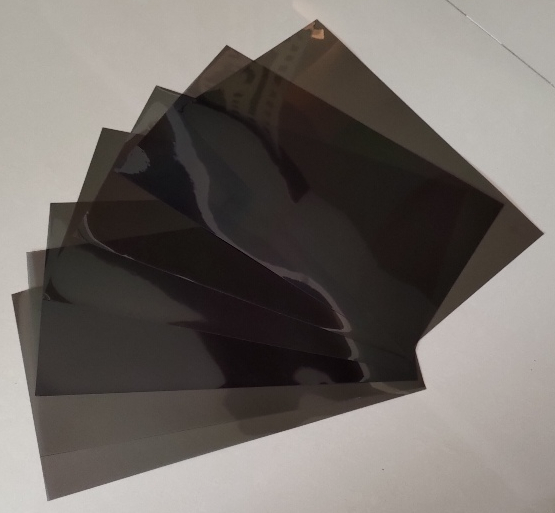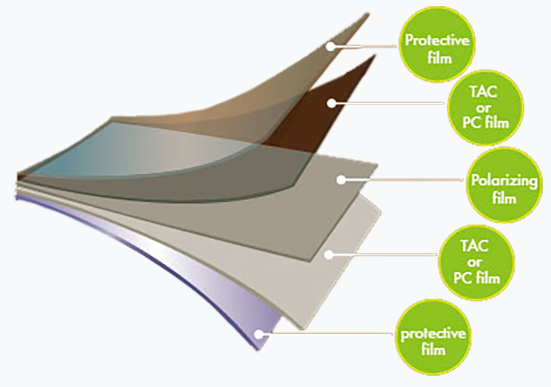A polarizer is an essential component of an LCD display. With the advent of full lamination technology, polarizers have become even more widely used in LCD panels.
The full name of a polarizer is polarizing film. It gets its name because the layer of film facing the viewer in a typical LCD is matte-treated to reduce surface reflections and scatter light, thereby improving viewing angles.
What Is a Polarizer?
From a physics perspective, LCD displays rely on polarized light to produce images. Every LCD has two polarizing films - one on the front and one on the back - tightly adhered to the glass substrate. Together, they form a liquid crystal layer with a total thickness of around 1mm. If either polarizer is missing, the LCD cannot display an image. Therefore, polarizers are a critical component in LCD display manufacturing.
In the LCD industry, polarizers are widely used. Their main function is to work with the liquid crystals to create visible images. During manufacturing, two sheets of tempered glass are printed with circuitry, sealed with adhesive along the edges, and pressed together. Liquid crystal is injected between them and then sealed. A polarizer is then applied to both the top and bottom of the glass assembly.
Structure of a Polarizer
A polarizer consists of multiple layers, typically including a protective film, TAC or PC (triacetate or polycarbonate), and PVA (polyvinyl alcohol):
Protective Film: Shields the polarizer surface. It must be removed before final product assembly.
TAC or PC: Supports and protects the PVA layer from cracking, shrinking, or being affected by moisture, and may provide surface treatment features.
PVA Layer: The core material that polarizes light.
Function of a Polarizer in LCD Displays
The polarizer controls the direction of light beams. Natural light is unpolarized. As it passes through a polarizer, light waves perpendicular to the transmission axis are absorbed, allowing only parallel light to pass through. This selective filtering enables light contrast and ultimately forms visible images on the screen.
Types of Polarizers
Transmissive Polarizer:
Allows full passage of backlight, maximizing brightness and ensuring clear image display.
Ideal for displays where power consumption is not a major concern.
Reflective Polarizer:
Does not allow backlight to pass through but reflects ambient light to make images visible.
Best suited for outdoor environments with ample sunlight and minimal power consumption.
Transflective Polarizer:
Combines both transmission and reflection capabilities.
Allows backlight to pass through while also reflecting ambient light, offering versatility for various lighting conditions.










